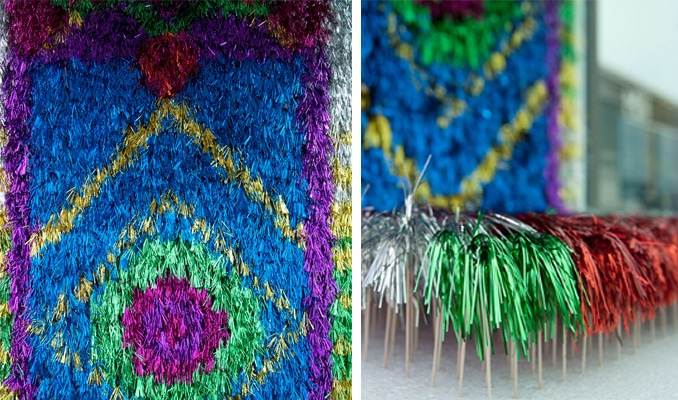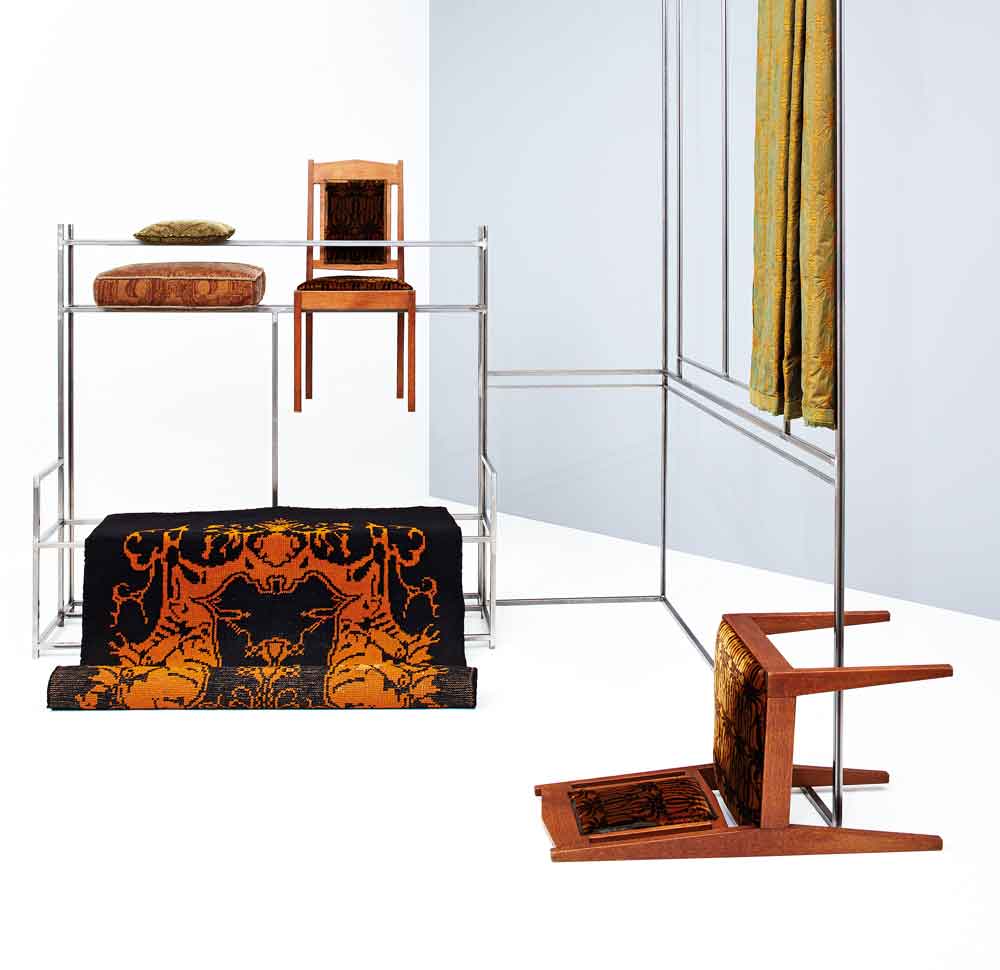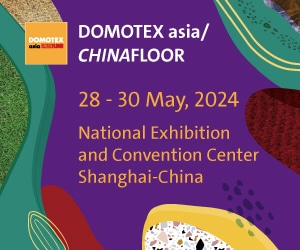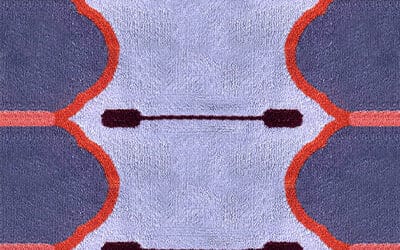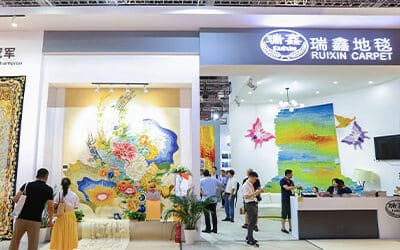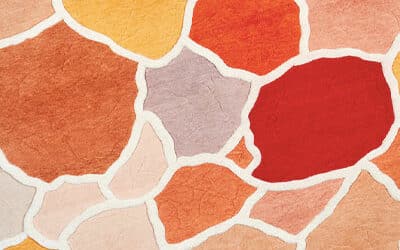A century of Dutch textile design is celebrated in seven concept rooms in the ‘Living Spaces’ exhibition at the TextielMuseum Tilburg.
Co-curated by Studio Makkink & Bey, the event has rooms focusing on movements such as Art Nouveau and Post-modernism, as well as less-specific areas such as ‘Post-war Boom 1950–65’ and ‘Alternative Living 1965–1980’. Highlights from the museum’s collections prevail, with the final room devoted to Makkink & Bey concepts for the near future.
Art Historian Yvonne Brentjens provides an overview of a century of Dutch textile taste in the exhibition catalogue. Frederik van Eeden’s 1904 article in The Amsterdam called for designers to resist ‘hideous pronkies’ (Dutch slang for ‘showpieces’) and ‘shoddy’ furniture and rugs. Nature must provide design inspiration, he declared. Theo Colenbrander followed van Eeden’s diktat with his hand-knotted Artichoke carpet (1905), with jagged shapes referencing artichoke leaves. However, Colenbrander had already gone down the nature route earlier with his Swamp carpet (1901) – a wonderfully lurid miasma of natural colour and asymmetrical shapes, an evolution perhaps of the 18th-century European vogue for the ‘natural’ shapes in ‘Bizarre’-patterned silks. Described by Brentjens as ‘regally arranged kitchen waste’, other early natural patterns include Carel Lion Cachet’s complex patterns inspired by halved red cabbages.
To see the full review of ‘Living Spaces’, click here to subscribe to COVER
